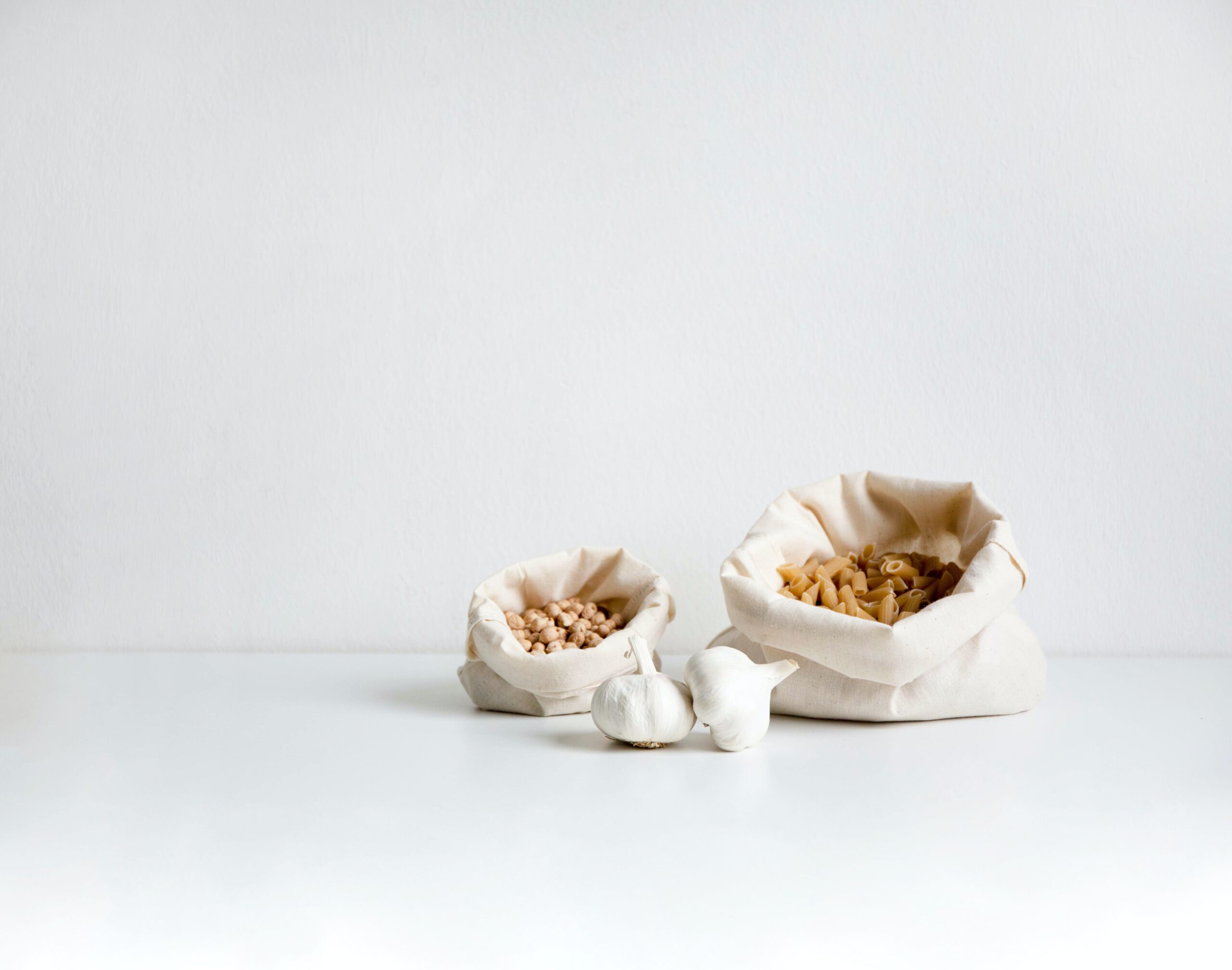I like to think of myself as a relatively conscious person, I tend not to buy into trends, I meticulously overthink every one of the few purchases I make and before being committed to working from home, I regularly walked or biked to work.
One area that I have however always struggled with has been in the kitchen, that’s not to say that I create a ton of waste, more that I simply am not a confident cook and my food knowledge is limited. I find supermarkets stressful and tend to grab whatever looks sensible or appealing at the time. I’ve tried writing down lists of useful sounding vegetables and condiments but seem to always end up with an empty, uninspiring fridge.
So I decided that 2020 was going to be the year that I turned this around, I was going to become a more self-sufficient version of myself.
I started simple, researching easy recipes to batch cook and bring to work as a packed lunch. I set aside a couple of hours at the weekend to create copious amounts of roasted veggies and couscous, amongst other things. I’ve always been a firm believer in a balanced diet and a balanced lifestyle, however the more I cook, the more conscious I have become about what I eat and where it comes from.
My food knowledge took on a steep learning curve once we were declared to be in a pandemic and made to stay at home. Staying at home means plenty of time to think, reflect and do. Suddenly we were all making pasta from scratch, having more time to enjoy creating indulgent food. Finding myself with time on my hands and with a garden that required some attention, I decided that now was also the time to build my first ever vegetable patch (with some help.. ok all the help, from my boyfriend).
Dedicating the time to planting seeds and plants, watering them and watching them flourish over the weeks has given me a new appreciation of the effort it takes to create even the simplest of foods.
So if you too are looking to be more sustainable in the kitchen, here are some tips to getting started:
1. Grow your own
There is something so satisfying about growing your own food, watching the plants grow and (hopefully) producing their fruits and vegetables. It’s inexpensive and you can start on your windowsill with herbs such as basil and sage, or small veggies such as chilipeppers and lettuce. If you have a little more space and light you can easily grow a potted tomato or cucumber plant, combining it with pretty flowers and herbs to make it into an attractive feature.
2. Eat with the seasons and opt local
Both of these points are intertwined, if you eat with the seasons you will be more likely to select local produce. Despite having access to all kinds of food all year round, there’s something special about looking forward to what the next season’s produce brings, everything connects and we can truly embrace the sentiment of each season, a warm pumpkin soup in the Autumn as the rain pours outside, or a fresh gazpacho in the warm summer sun.
By choosing local farmers markets and restaurants that use local, fresh food, you’re supporting your local producers, and on a larger scale supporting the food chain, with less miles travelled and ultimately fresher and healthier produce.
3. Food prep and correct storage
Setting aside time to prep your food for the week can lessen the chance of ending up with food waste and random meals. Researching a few simple recipes and batch cooking can help your groceries to go a little further. Knowing how to correctly store food can also improve its shelf life and help to avoid any unnecessary food waste. From air tight containers for your dry goods, to freezing your leftover veggies for a future minestrone, there are many ways to preserve food. I like to freeze my herbs as I find that if left in the fridge they tend to wilt and I’m not able to use them all, I also freeze fruit and vegetables to stop them from going bad, they allegedly have the same nutritional value. Next up will be the wonderful world of pickling, something I’m looking forward to getting started on.
4. Limit plastic usage
Following on from the above point, you can also make conscious choices in your kitchen. By switching up your Tupperware for mason jars, you can actually see what’s inside and they tend to look more elegant. Instead of plastic wrapping you can try beeswax, It’s reusable and works just as well as other food wraps. If you’re prone to a packed lunch or food on the go then you can try resealable sandwich bags, which can be washed and reused. I also like to recycle old jam jars and condiment jars into various storage options.
When delving into the world of sustainability, sometimes the best thing to do can be to start small and to then build upon these smaller actions. In the end, all these little changes that we make every day can inspire us to think differently about how and what we consume in all aspects of our lives, to be more engaged in the process, and to encourage others.
This article is also featured on Stor-ey – take a look at their website for all things sustainability.

